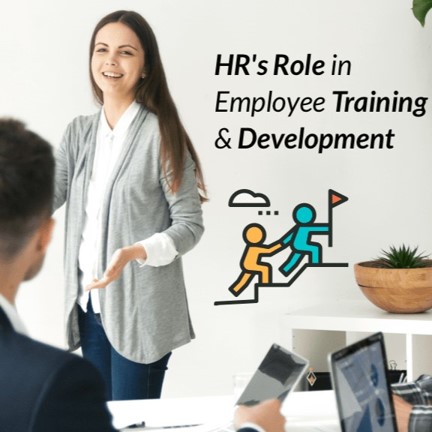In the fast-paced landscape of the contemporary workplace, the importance of continuous learning has become paramount. As a senior professional content creator deeply immersed in the realms of business and technology, I invite you to embark on a comprehensive exploration of how Human Resources (HR) plays a pivotal role in fostering a culture of continuous learning within organizations.
In an era where technological advancements and market dynamics are ever-evolving, the ability of employees to adapt and acquire new skills has become a cornerstone of success for both individuals and organizations. This article delves into the multifaceted role of HR in creating and sustaining a culture of continuous learning. From the strategic planning of learning initiatives to the implementation of effective training programs, HR is at the forefront of cultivating an environment where employees are empowered to grow and thrive.
Understanding the Landscape of Continuous Learning
Continuous learning is not merely a buzzword but a fundamental shift in how organizations approach skill development. It goes beyond periodic training sessions to embrace an ongoing, dynamic process that aligns with the evolving needs of the workforce and the industry.
- Prospective Insights:
HR professionals need to gain prospective insights into the evolving skill landscape. Understanding the skills that will be crucial in the future allows HR to design learning programs that are not only relevant today but also future-proof employees against upcoming challenges.
- Dynamic Skill Mapping:
Continuous learning requires a dynamic approach to skill mapping. HR plays a pivotal role in regularly assessing the skills within the organization, identifying gaps, and aligning learning initiatives with strategic business objectives. This ensures that the workforce remains agile and ready to meet evolving job requirements.
- Designing Strategic Learning Initiatives
Strategic planning is the foundation of any successful continuous learning program. HR professionals must align learning initiatives with organizational goals, employee career paths, and industry trends.
- Customized Learning Paths:
One of the key responsibilities of HR is to design customized learning paths for employees. This involves understanding individual career aspirations, current skill levels, and organizational needs. Tailoring learning programs to meet these specific requirements enhances engagement and ensures a more significant impact on skill development.
- Cross-Functional Training:
Promoting cross-functional training is a strategic move that HR can champion. By encouraging employees to acquire skills beyond their immediate job requirements, organizations build a versatile workforce capable of adapting to changing roles and responsibilities. This not only benefits individual career growth but also strengthens the overall resilience of the organization.
- Implementing Effective Training Programs
The success of continuous learning hinges on the effectiveness of training programs. HR must ensure that the methods used are engaging, accessible, and aligned with the diverse learning preferences of employees.
- Blended Learning Approaches:
Implementing a blend of traditional and modern learning approaches is a strategy HR can employ. This might include a mix of instructor-led training, e-learning modules, webinars, and hands-on experiences. Blended learning ensures that the diverse needs of a modern workforce are met, making skill development a personalized and effective journey.
- Leveraging Technology:
In the digital age, HR can harness the power of technology to enhance training programs. Learning Management Systems (LMS), virtual reality, and artificial intelligence can be integrated into training modules to create immersive and efficient learning experiences. Technology not only makes learning more engaging but also facilitates tracking and assessment of skill development.
Fostering a Learning Culture
Creating a culture of continuous learning goes beyond the implementation of specific programs; it involves cultivating an environment where learning is ingrained in the organizational DNA.
- Leadership Endorsement:
HR needs to secure leadership endorsement for continuous learning initiatives. When leaders actively support and participate in learning programs, it sends a powerful message throughout the organization about the importance of ongoing skill development.
- Recognition and Rewards:
Recognizing and rewarding employees for their commitment to learning is a potent strategy. HR can institute programs that acknowledge and celebrate achievements in skill development. This not only motivates individuals but also sets a precedent for others to follow suit.
- Measuring Impact and Adjusting Strategies
To ensure the efficacy of continuous learning initiatives, HR must employ robust measurement mechanisms. This involves tracking the impact of learning programs on individual performance and organizational outcomes.
- Key Performance Indicators (KPIs):
Establishing KPIs related to skill development is essential. HR can define metrics such as improved job performance, increased productivity, or successful application of newly acquired skills on the job. Regularly tracking these indicators provides valuable insights into the effectiveness of learning initiatives.
- Feedback Mechanisms:
Implementing feedback mechanisms is crucial for understanding the employee experience with learning programs. HR can gather feedback through surveys, focus groups, or one-on-one discussions to identify areas of improvement and make real-time adjustments to the learning strategy.
The Pros and Cons of Continuous Learning Initiatives
As with any transformative strategy, continuous learning initiatives come with both advantages and challenges. Recognizing and addressing these factors is essential for HR to navigate the complexities of skill development effectively.
Pros:
- Enhanced Employee Engagement:
Continuous learning contributes significantly to employee engagement. When individuals see that their organization is invested in their professional growth, it fosters a sense of loyalty and commitment. Engaged employees are more likely to contribute positively to organizational success.
- Adaptability and Innovation:
A workforce committed to continuous learning is inherently more adaptable and innovative. Employees are better equipped to embrace change, contribute fresh ideas, and navigate the challenges posed by technological advancements or shifts in market dynamics.
- Competitive Advantage:
Organizations that prioritize continuous learning gain a competitive advantage. A skilled and adaptable workforce positions the company to respond swiftly to industry changes, outperform competitors, and maintain relevance in the market.
Cons:
- Resource Intensiveness:
Implementing and maintaining continuous learning programs can be resource-intensive. HR must allocate budgets, invest in technology, and dedicate time to design and deliver effective training. For smaller organizations or those with limited resources, this can be a significant challenge.
- Resistance to Change:
Employees may exhibit resistance to the cultural shift towards continuous learning. Some may be comfortable with traditional learning methods, while others might perceive the need for ongoing skill development as an added pressure. HR must actively address this resistance through communication and change management strategies.
Conclusion
In conclusion, as organizations navigate the imperative of continuous learning, HR emerges as the linchpin in shaping a culture that fosters professional development. Skill assessment and identification, designing tailored learning programs, fostering a learning-friendly environment, and evaluating learning outcomes all fall under HR’s purview. While challenges like resistance to change and resource allocation complexities exist, they are integral to the transformative process. HR’s adaptive approach becomes pivotal, ensuring that learning initiatives align with evolving needs, and cultural alignment fosters a sense of belonging. In this dynamic journey, HR, as the architect of a continuous learning culture, orchestrates a workforce that is not just equipped with skills but is strategically aligned with organizational goals.
Blog Writer:
Kriti Sharma
Young HR Talent Reformer , badgefree





